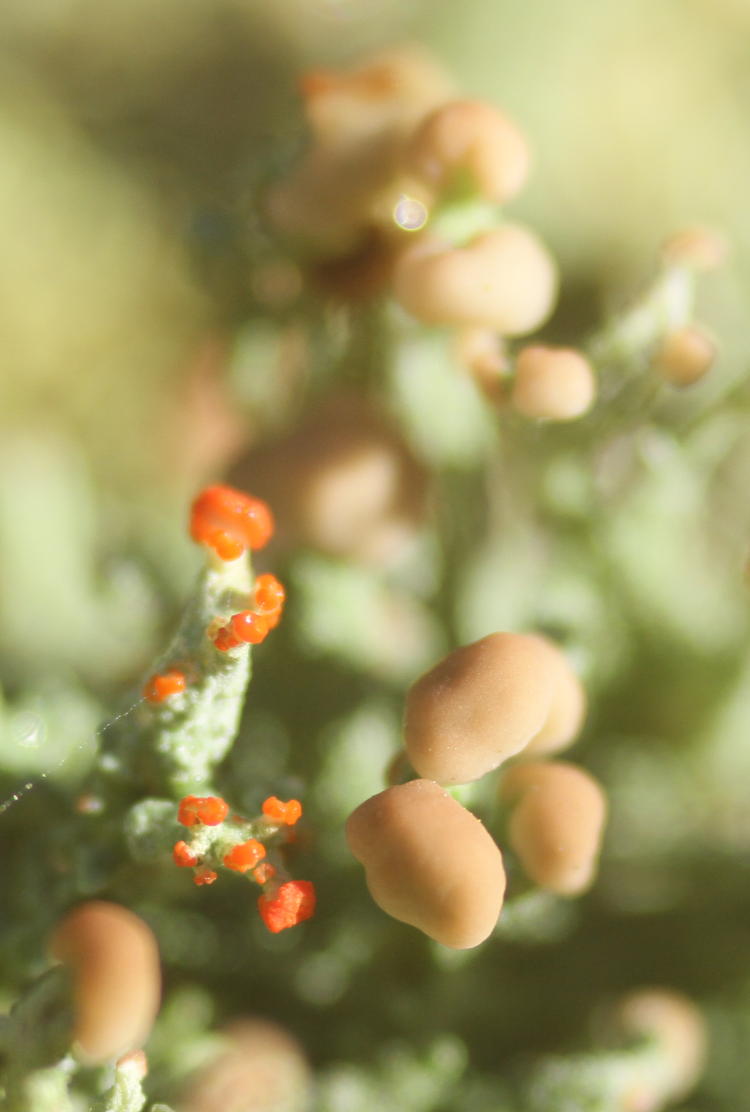
The moment someone talks about timing when discussing photography, most people immediately think of tripping the shutter, getting the photo at the key moment that ideal action or positioning occurs, and this is certainly one aspect that’s important, and thus, the first that I’ll discuss – which tells you there’s more coming along, too.
Timing the shutter trip is not just about reflexes. First off, recognize that the speed of the button press does not increase with exertion; we’re talking a movement of less than a millimeter on every camera made since 1985, so slamming, squeezing, or really, doing anything other than a gentle press will do nothing for your timing, and a whole lot towards moving the camera, changing your framing and/or inducing motion blur. Don’t get excited, don’t tense up. Just a subtle little touch – that’s all it takes.
More, timing relies on anticipating the moment, and occasionally, the minimal delay between that button press and the actual capture of the image – in this era of electromagnetic aperture controls, mirror actions, and shutter curtains, most cameras from the last ten to fifteen years have release delays so small they won’t affect anything except the most demanding of subjects, but older cameras may have noticeable delays, and really, the only thing to do about this is get used to it and compensate accordingly.
This is assuming that you’re ready to trip the shutter at that very millisecond, which requires that you’re paying close attention and prepared for the (perhaps unexpected) action. Generally, this should be the case the moment the camera is raised to your eye, but it’s startling how many people are simply ‘looking’ and not ‘ready to take the shot’ when they do this. Finger on shutter release, AF and metering active (usually this is done with the initial ‘half-press’ of the shutter release,) and subject aligned as desired. It’s more a mindset, really, the internal voice telling yourself, “I’m ready – show me what you got.”
A quick note about trusting frame rates. Current cameras can rip off a lot of frames quickly if you hold the shutter down (and have that option set in the first place) – as many as ten frames per second (fps) on the top-end models, but usually between 2.5 to 5. This means it’s tempting to just let the camera crank away when something interesting is happening, and hope that one of those frames captures the precise moment that you want. It’s a bad habit, one that I often warn against. Let’s say that you want to capture the contact of a foot with the ball in some sporting event, and to freeze action, you have a shutter speed of 1/250 second. With a rate of 10fps, you’ll still only capture 10/250 of of the action, or 1/25 of the action every second, or 4% if you like. And a typical kick takes place in about 1/4 second, so now we’re down to about a 1% chance. Granted, there’s probably a bracket of acceptable periods of contact, so let’s be extremely generous and say your chances are as high as 10% – is that enough? Better to simply wait for that particular action and trip the shutter right then.
Additionally, periodic things like a bird flapping its wings can actually coincide with the frame rate, so while you might be hoping to capture the bird with its wings raised high, you may get a sequence of frames with them in the exact same position; I’ve done this several different times. At the very least, insert slight pauses in the sequences, lifting off the shutter release for a fraction of a second to try and break this pattern – because, yeah, trying to time the flapping wings is exceptionally hard.
Anticipation is a very big thing that applies to countless subjects, the readiness that something will suddenly become a lot more photogenic, that some behavior or action or emotional response appears that makes the photo many times better than without. In some cases, this is a knowledge of the subject. In my present pursuits, I can often spot when a bird is about to take flight, because they physically prepare for it. When I was shooting weddings in the past, it was recognizing people, the earnest storyteller who would eventually reach a punchline, the sudden delight when someone new walks up. Behavior is more predictable than we often believe, but it takes observation and recognition of trends and tendencies.

Much of my macro work is done at very high magnification with a very short depth of field, handheld because setting up a tripod is both too slow and far too difficult in most situations. The flash takes care of motion blur, but not camera motion, the trivial wobbles and shifts in my position that cause the subject to wander in and out of that short depth-of-field, so crucial to these photos is the ability to trip the shutter as I lean back into the range of sharp focus. The same may be said for action shots in natural light, especially with a wide aperture that, again, shortens the depth-of-field, let’s say the sports doofus (I really couldn’t care less about sports) approaching the camera. Rather than relying on autofocus to try and tack a subject that continually changes distance, which sometimes works and sometimes doesn’t, you can set focus manually at the range that the subject will enter and trip the shutter as they hit this sweet spot. Some camera bodies, with Nikon notably, have this built in, usually called ‘trap focus,’ but I have never had the opportunity to try this out. If you’ve developed the skill on your own, you can do this with any camera, without having to switch settings.
 Timing of conditions is another important aspect. Sure, it’s easy to know that sunrises and sets are ideal times (sometimes, anyway,) but it helps to know that the light and sky conditions will change noticeably within minutes or even seconds, as well as the chance that something photogenic will enter the frame; the sailboat may have only a moment or three when it turns at the right angle to throw a reflection from the hull or catch light through the sail, as well as when it passes across the glitter trail, the reflections of the sun on the water. Yet, changes can occur at any time of the day, such as when the breeze moves the leaves or stalks in the right direction, or tosses the fur of your subject just right. And the light can change, sometimes suddenly on partly-cloudy days, which changes the reflections, the color cast, the contrast, and the shadows, all factors in how the photo looks. Colorful subjects look better in lower-contrast light, like hazy or partly-cloudy, while textures look better with higher contrast and sharper shadows, so turning towards those subjects as the light changes can give you much better results.
Timing of conditions is another important aspect. Sure, it’s easy to know that sunrises and sets are ideal times (sometimes, anyway,) but it helps to know that the light and sky conditions will change noticeably within minutes or even seconds, as well as the chance that something photogenic will enter the frame; the sailboat may have only a moment or three when it turns at the right angle to throw a reflection from the hull or catch light through the sail, as well as when it passes across the glitter trail, the reflections of the sun on the water. Yet, changes can occur at any time of the day, such as when the breeze moves the leaves or stalks in the right direction, or tosses the fur of your subject just right. And the light can change, sometimes suddenly on partly-cloudy days, which changes the reflections, the color cast, the contrast, and the shadows, all factors in how the photo looks. Colorful subjects look better in lower-contrast light, like hazy or partly-cloudy, while textures look better with higher contrast and sharper shadows, so turning towards those subjects as the light changes can give you much better results.
I often tell my students that those fluffy white cumulus clouds that we all drew in grade school are very short-lived, especially around here; within the hour, they typically either vanish or thicken up towards overcast. And their position in the frame makes a difference too, filling in a bare patch of sky or appearing alongside (but not behind) our chosen subjects. The sun angle makes a difference on how blue the sky appears as well, tending to be deepest exactly opposite the sun, so midday is often not the best time to be out shooting.
Which brings us to the hour of the day. Mornings are the time for fog, dew, frost, and the first bird activities of course, so even without the performance of a nice sunrise sky, there are often subjects to be exploited. Evenings see the last bird activities as they forage before finding a place to roost, as well as returning boats or, if you’re into that kind of thing, the emergence of human nightlife. Dusk will occasionally reveal the early forays of the nocturnal species, but if you’re willing to go looking by flashlight (or ideally headlamp,) you can find the night dwellers, often species you will never see by day.
 And then there are events, which may be as specific as an astronomical event or even just a flash at sunrise, or something particular in the lifecycle of a species, like the moment a fledgling leaves the nest box. For these, adequate preparations are necessary, such as knowing the exact times as well as being in a good location to witness the event, or it might take staking out a particular subject with the knowledge that it’s going to happen sometime soon; patience and readiness are the bywords here, perhaps testing your dedication to the pursuit because some of these things are only slightly predictable. For the black-capped chickadee (Poecile atricapillus) here, it had hung around the opening of the nest box for perhaps ten minutes, chattering excitedly for parents that were resolutely refusing to come by or answer (because that’s the way they convince the fledgling to commit,) before it abruptly bailed the box and started figuring out how controlled flight works from ground level. Its sibling, on the same day, took better than 40 minutes to get up its nerve, even though it was all alone in the nest box now. And while I captured this one (barely, and not very impressively,) after the long delay, the latter still leapt from the box while my hand was away from the shutter release.
And then there are events, which may be as specific as an astronomical event or even just a flash at sunrise, or something particular in the lifecycle of a species, like the moment a fledgling leaves the nest box. For these, adequate preparations are necessary, such as knowing the exact times as well as being in a good location to witness the event, or it might take staking out a particular subject with the knowledge that it’s going to happen sometime soon; patience and readiness are the bywords here, perhaps testing your dedication to the pursuit because some of these things are only slightly predictable. For the black-capped chickadee (Poecile atricapillus) here, it had hung around the opening of the nest box for perhaps ten minutes, chattering excitedly for parents that were resolutely refusing to come by or answer (because that’s the way they convince the fledgling to commit,) before it abruptly bailed the box and started figuring out how controlled flight works from ground level. Its sibling, on the same day, took better than 40 minutes to get up its nerve, even though it was all alone in the nest box now. And while I captured this one (barely, and not very impressively,) after the long delay, the latter still leapt from the box while my hand was away from the shutter release.
It doesn’t matter how practiced you are, it doesn’t matter how ready you are – you will miss shots. These aren’t failures, they’re practice, the development of the skills necessary to improve your chances and your percentage of keepers. No pursuit is improved over dwelling on the missed opportunities – you just learn what you can, recognize that the dice didn’t roll your way this time, and keep your goals in mind for that next opportunity. But if you can give yourself an edge, that can only help.
Good luck!






















































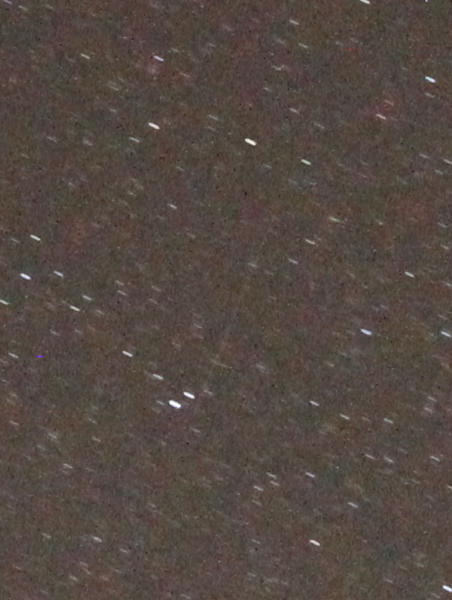 Very close examination of the frame between those two (this is full resolution here) revealed the faint trace of a passage, right in line with the two on either side. In other words, I didn’t catch a pair of meteors, I caught three frames of a much slower satellite passing along in a polar orbit. The change in brightness indicates that it was rotating or tumbling, catching the sunlight from its high altitude off of a variably reflective surface or angle. In fact, it even appears in the next two frames as well, but extremely faintly as it exits the frame.
Very close examination of the frame between those two (this is full resolution here) revealed the faint trace of a passage, right in line with the two on either side. In other words, I didn’t catch a pair of meteors, I caught three frames of a much slower satellite passing along in a polar orbit. The change in brightness indicates that it was rotating or tumbling, catching the sunlight from its high altitude off of a variably reflective surface or angle. In fact, it even appears in the next two frames as well, but extremely faintly as it exits the frame.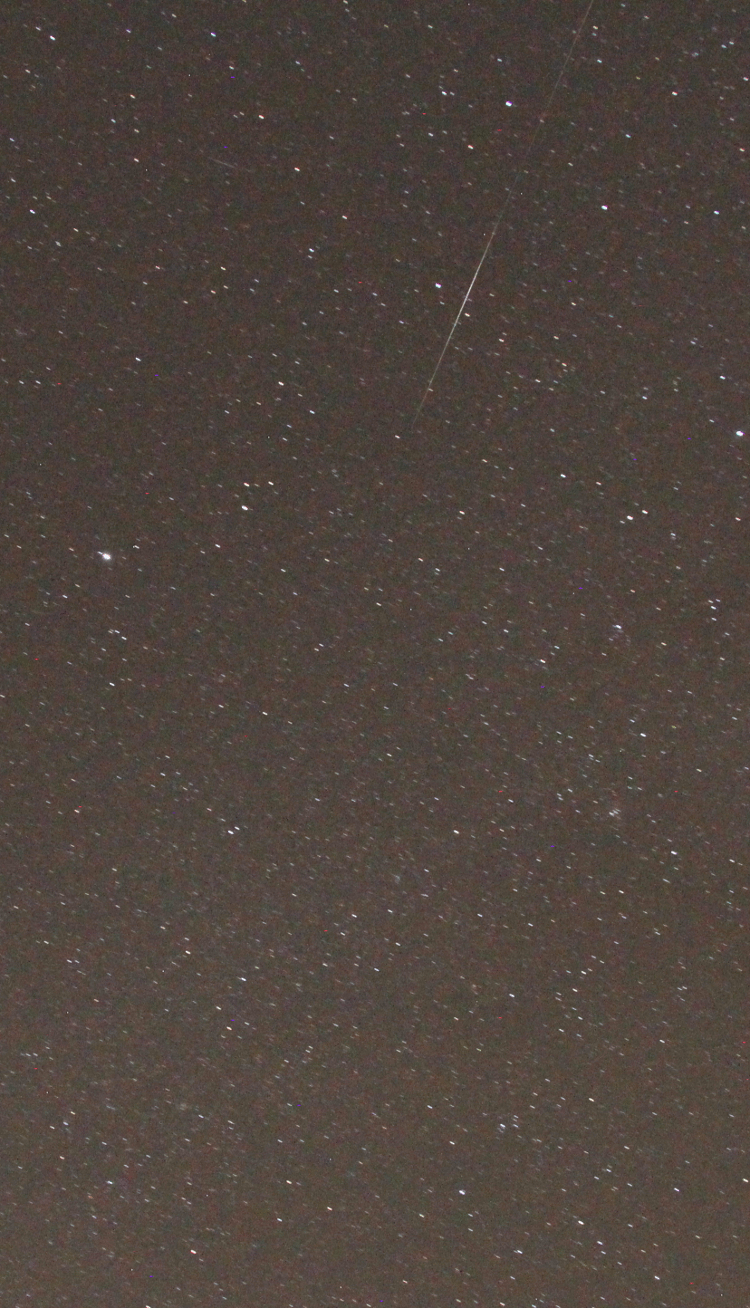
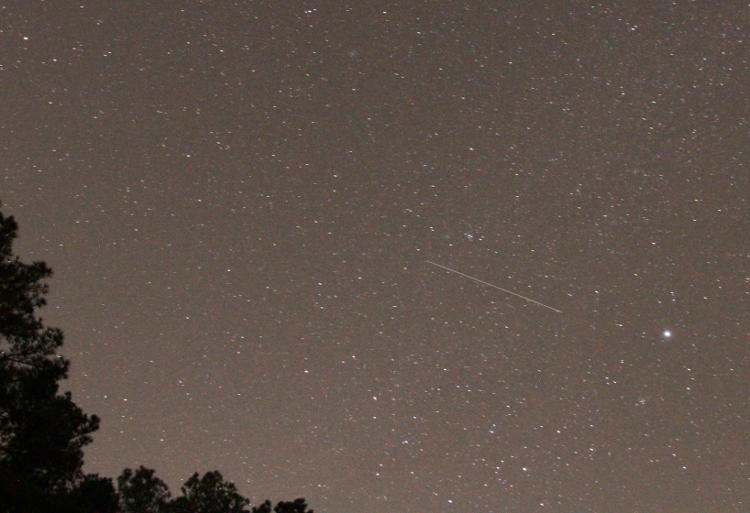
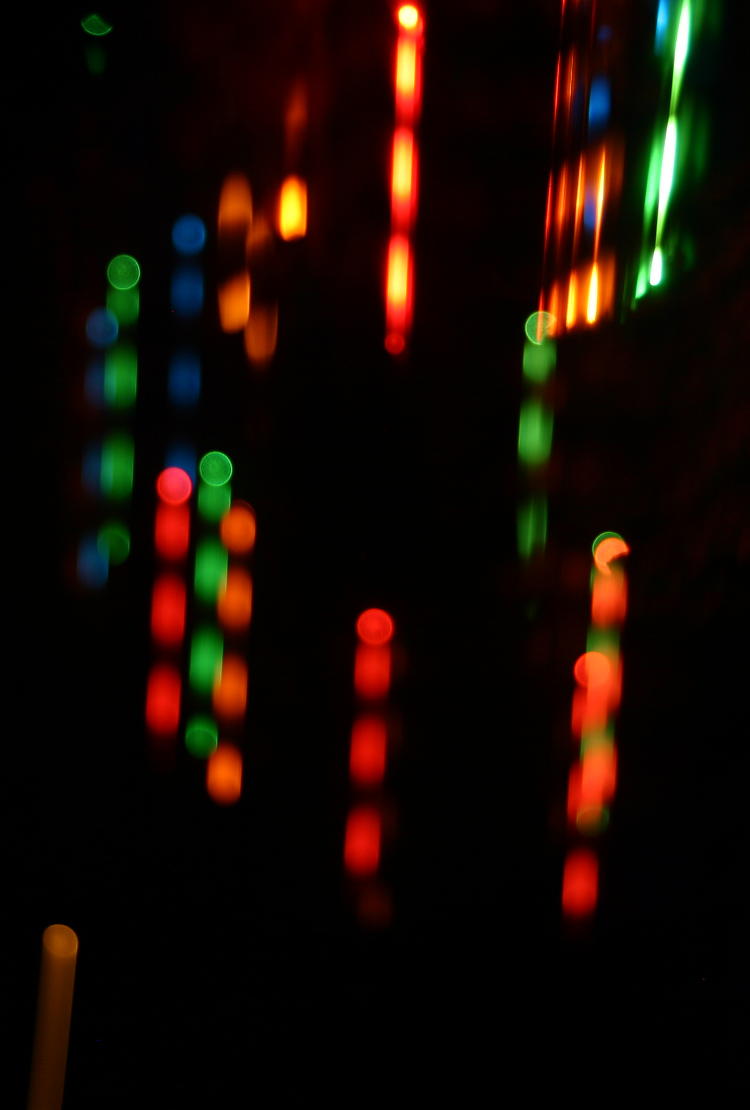
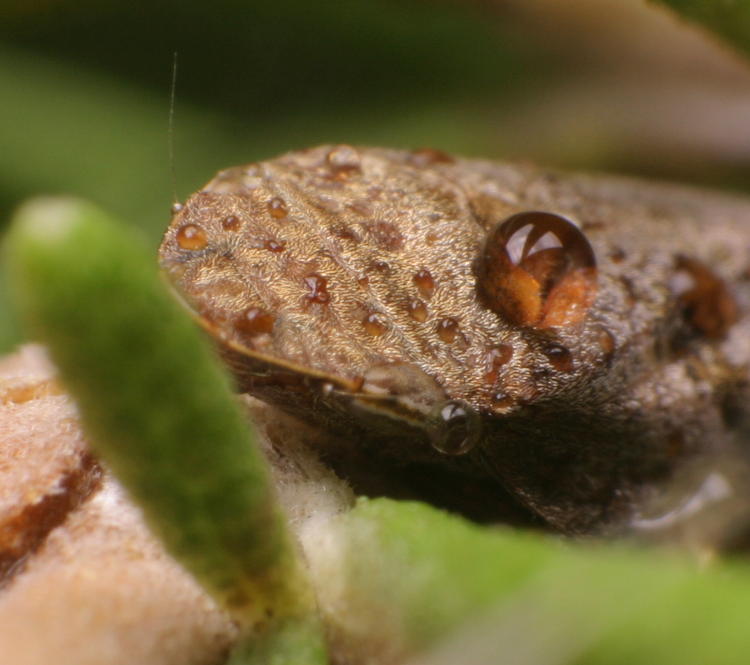

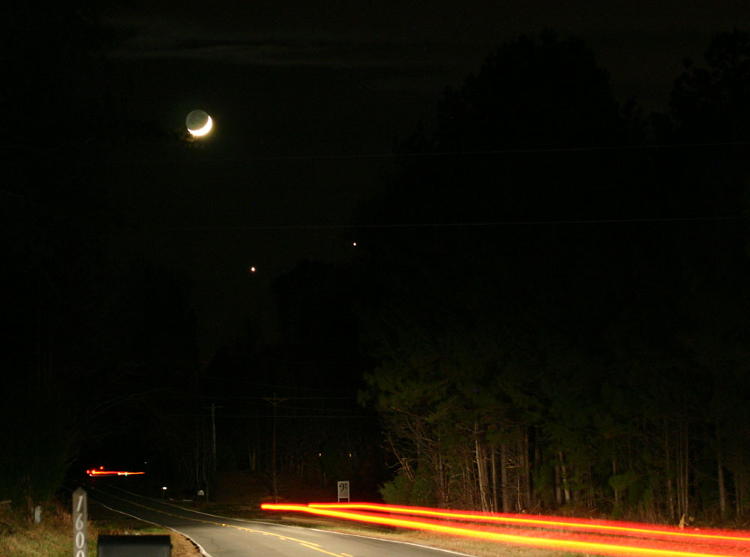
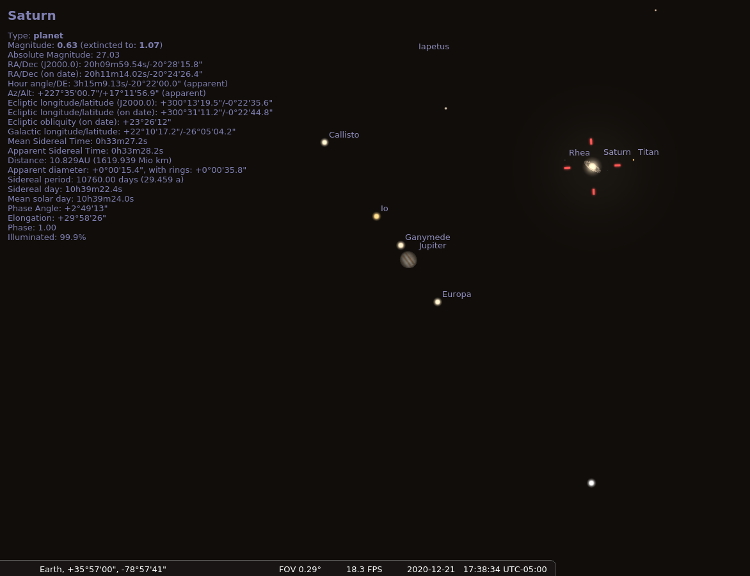

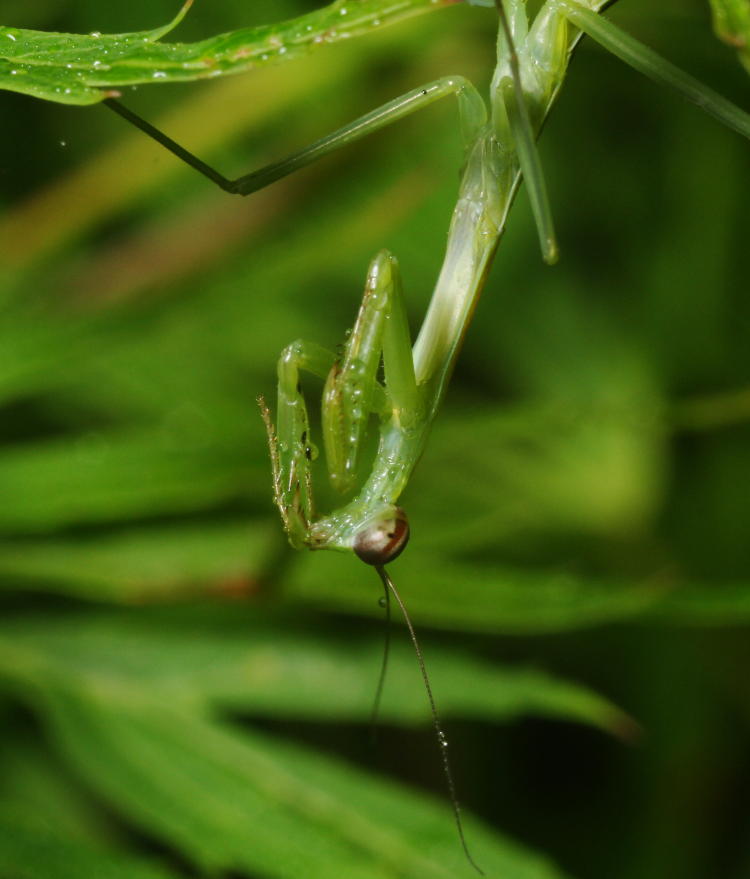



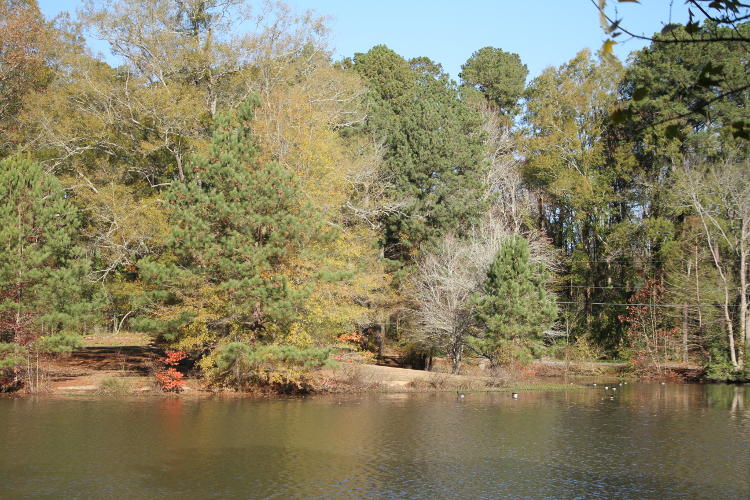
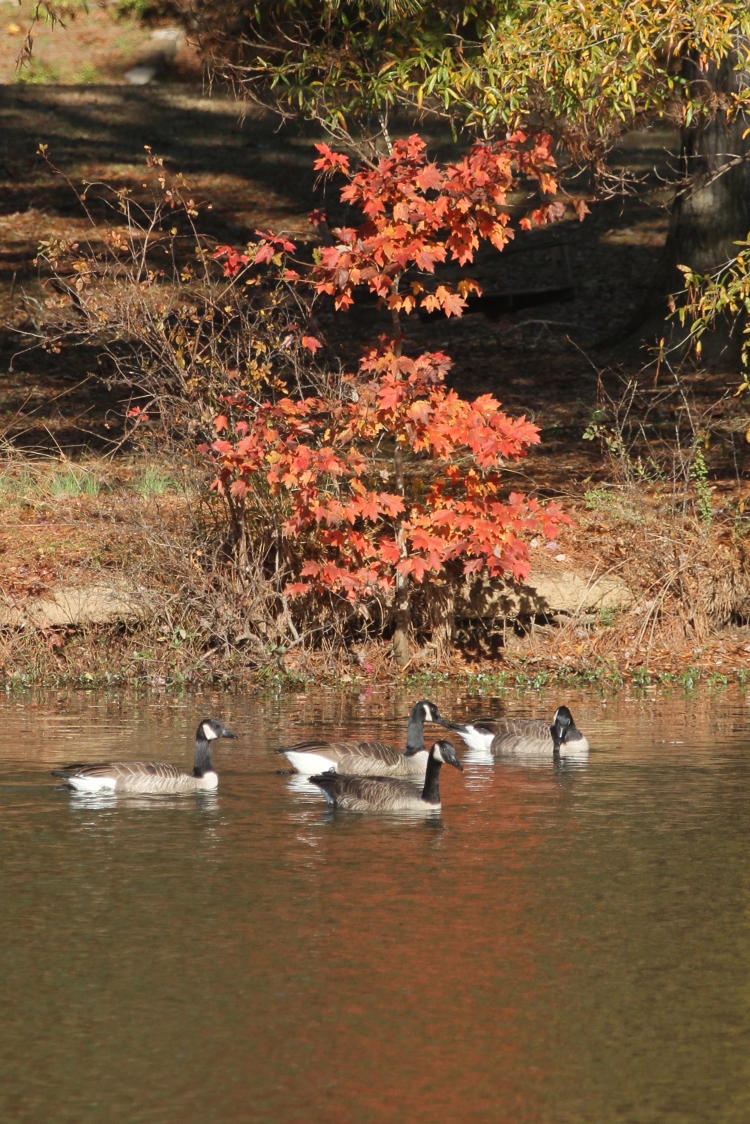
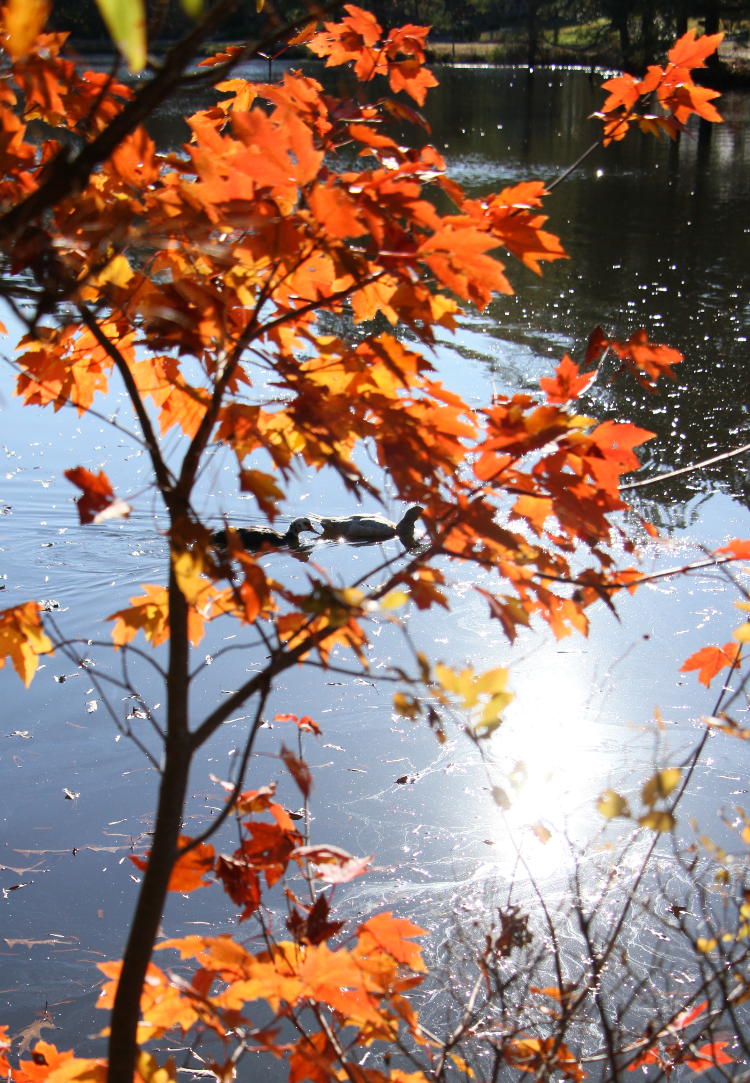

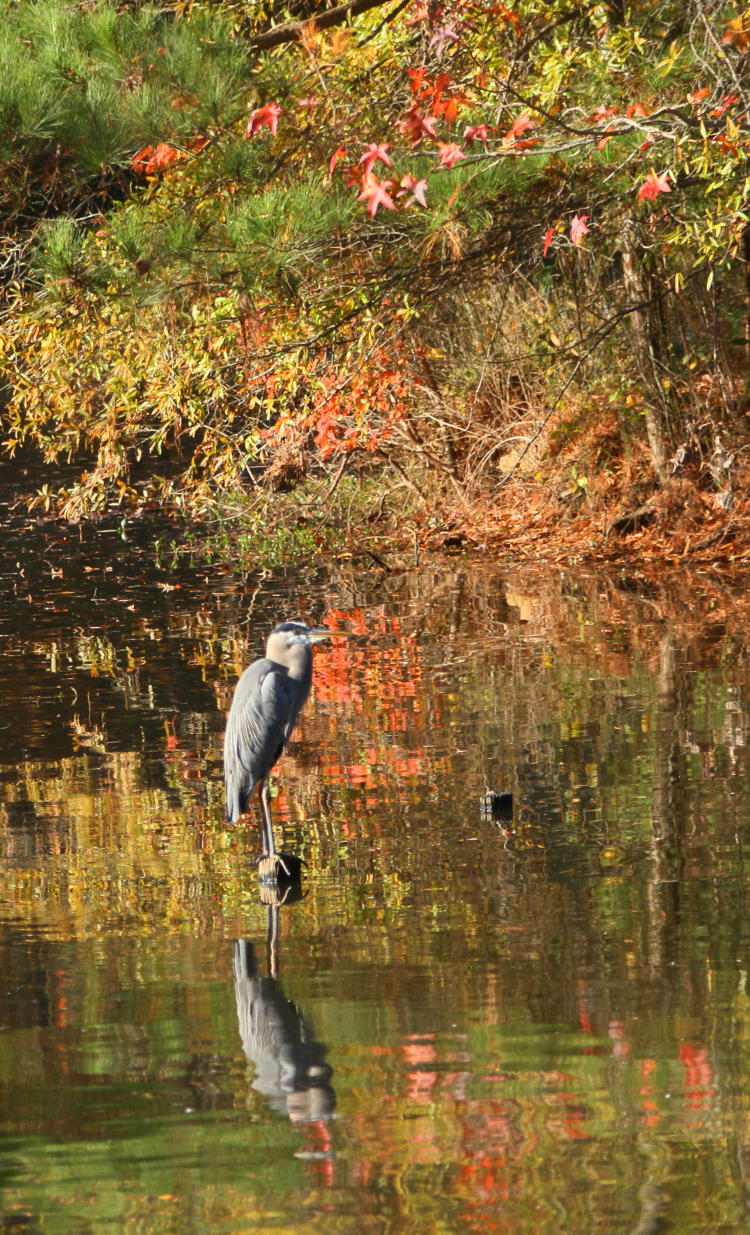


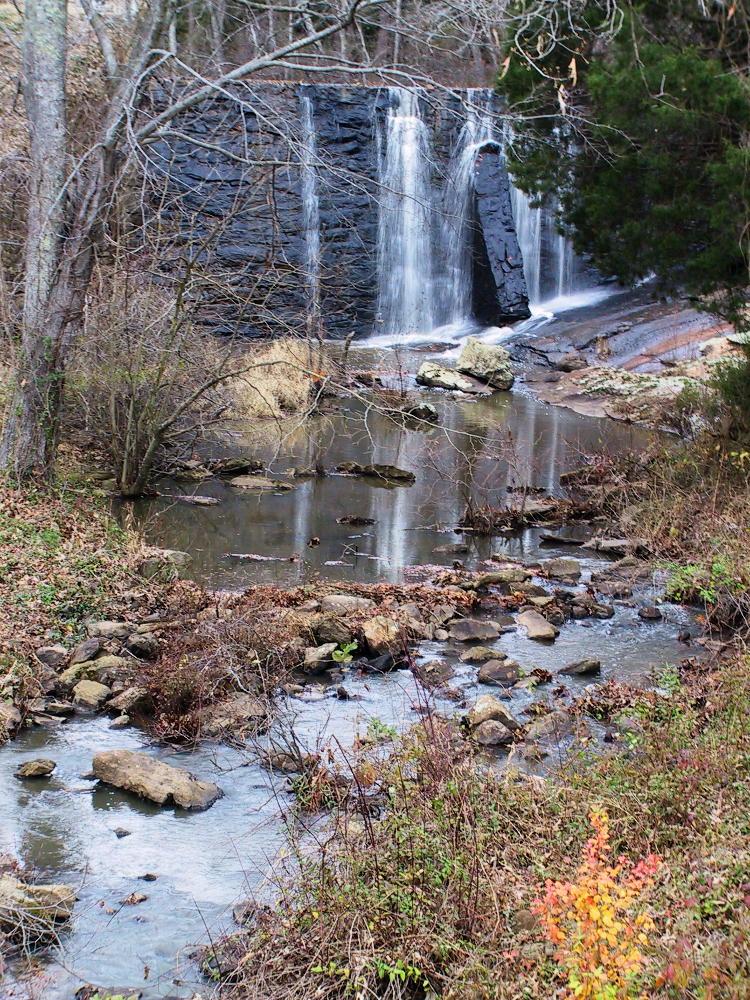
 So the image above was taken during a photo outing that
So the image above was taken during a photo outing that 
